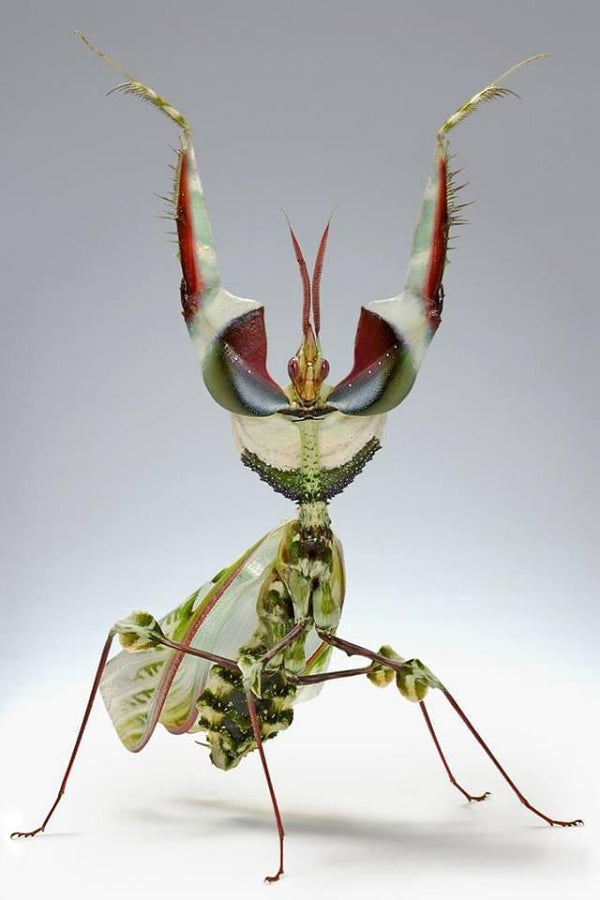
Idolomantis Diabolica: Meet the Devil’s Flower Mantis
Have you ever heard of a creature that looks like it walked straight out of a fantasy novel? Allow me to introduce you to Idolomantis diabolica, commonly known as the Devil’s Flower Mantis. This mesmerizing insect is one of nature’s most fascinating, blending beauty and ferocity in the most spectacular way.
What Makes the Devil’s Flower Mantis So Special?
First off, let’s talk about its appearance. Idolomantis diabolica is one of the largest species of praying mantis and arguably the most beautiful. Its name, "Devil’s Flower," hints at its stunning floral mimicry. The mantis sports an array of vibrant colors – from brilliant greens and whites to striking reds and blues. This coloration is not just for show; it helps the mantis blend seamlessly into its floral surroundings, making it a master of camouflage. When threatened, it can fan out its raptorial legs and wings, displaying an intimidating array of colors to scare off predators.
Life in the Wild
Native to East Africa, the Devil’s Flower Mantis lives in hot, dry environments. It has adapted perfectly to its surroundings, spending its life among flowers and plants, waiting for unsuspecting prey to wander too close. Its diet mainly consists of other insects, which it catches with its lightning-fast reflexes. The mantis' long, spiky forelegs are perfect for grabbing and holding onto prey.
One of the most fascinating aspects of Idolomantis diabolica is its hunting strategy. This mantis doesn’t just sit and wait – it actively lures its prey. By mimicking the appearance of a flower, it attracts pollinating insects like bees and butterflies, which unknowingly fly right into the mantis's deadly grasp.
Raising Devil’s Flower Mantises
For those brave enough to keep them, Devil’s Flower Mantises can be captivating pets. However, they are not for the faint of heart or the inexperienced. These mantises require specific conditions to thrive, including precise temperature and humidity levels, as well as a diet of live insects. Their beauty and unique behavior make them a favorite among exotic pet enthusiasts, but they do demand a lot of care and attention.
Fun Facts
- **Sexual Dimorphism:** Females are generally larger and more robust than males, which is common in many mantis species.
- **Molting:** Like all insects, they molt as they grow. Watching a mantis emerge from its old exoskeleton is a fascinating, albeit delicate, process.
- **Longevity:** In captivity, they can live up to a year, which is relatively long for mantises.
